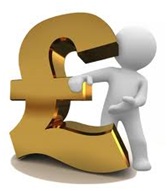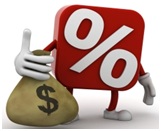|
 |
|
 |
Capital investment appraisal
Capital investment appraisal is... Evaluating whether or not to buy a fixed asset (like property or equipment) based upon two main considerations: • The total profits earned by the fixed asset over its useful life. • How quickly the asset will pay off its cost and begin to contribute to profits. A business’s cash problem will decide which factor is more important (e.g. a cash shortage will necessitate quicker profits).
How is it done? Research shows that businesses use at least one of these four appraisal techniques:
1. Payback period (PP) This finds out the number of years it takes to recover the cost of the fixed asset from its earnings. Such earnings are usually defined as: the asset's net profits (before tax is paid) plus... its depreciation (the amount deducted from the asset’s value for wear and tear). Small businesses use this method more than the others.
2. Accounting rate of return (ARR) – the percentage rate of return on a fixed asset as follows:
Asset’s cost
3. Net present value (NPV) and Internal Rate of Return (IRR) Using discounted cash flow (DCF) – see below.
Discounted Cash Flow (DCF) The problem with PP and ARR above is that money received now (e.g. an asset’s earnings) is worth more than money received at a later date. Why? Money received can be invested and earn interest.
Example If $100 can be invested at 10% per year, then the value today (or the present value) of $110 received in one year’s time will be $100. In other words, if $100 was invested today, it would become $110 in a year’s time (the original $100 plus $10 interest). In DCF the rate of interest (10% in our example) is called the discount rate. The present value of $1 of an asset’s earnings (for each year it is used) can be calculated as follows: 1 (1+r) n
r = discount rate, n = number of years after the purchase of the fixed asset that earnings occur.
The present values of the asset’s earnings are added up from which the asset’s cost is deducted. This gives its net present value (NPV), and the asset with the highest NPV will normally be chosen. The Internal Rate of Return (IRR) method finds the discount rate at which the NPV is zero (the NPV will fall as the discount rate rises). The fixed asset with the highest IRR will normally be chosen. IRR and NPV are more commonly used by larger businesses.
An investment appraisal example
We shall assume: • Each computer costs $10,000. • The expected useful life of each computer is four years. • Their earnings are net profit (before paying any tax) plus depreciation (money put aside for eventually replacing the asset):
Computer A
Total profit = $130,000
Computer B
Total profit = $139,500
Payback method Computer A pays for itself from earnings in 2012. But this doesn’t happen until 2013 for Computer B. Decision: Choose Computer A.
Rate of return method The rate of return is (average profit ÷ cost) x 100%:
Computer A Average profit = Total profit ÷ computer's useful life in years = 130,000 ÷ 4 = 32,500. % rate of return = (32,500 ÷ 10,000) x 100% = 325%
Computer B Average profit = 139,500 ÷ 4 = 34,875. % rate of return = (34,875 ÷ 10,000) x 100% = 348.75% Decision: Choose Computer B, which contradicts the payback decision! The company will go for Computer A, if it needs to pay off the computer as quickly as possible because of cash problems. Otherwise it will choose Computer B.
Net present value (NPV) method Remember the present value of $1 earnings is 1 ÷ (1+ r)n ( we shall assume r, the discount rate, is 10%). Example Two years after purchase (n=2) the present value of $1 is 1÷(1+10%)2 = 0.826 Present values at different discount rates can also be found in tables!. NPV is total present value of earnings less the asset’s cost. The NPV for each computer is: Computer A
NPV is total present value of earnings less the asset’s cost = 109,410-10,000 = $99,410
Computer B
NPV = 111,946 - 10,000 = $101,946
Decision: according to the NPV method Computer B should be chosen.
Key quotes explained
“A dollar today is worth more than a dollar tomorrow” - Richard Brealey, pictured
right,and Stewart Myers, pictured below (in their
textbook, Principles of Finance). Today’s dollar is worth more because it can be invested immediately to earn interest. They call this the first principle of finance, and the concept of present value is based upon it. Their second principle is “a safe dollar is worth more than a risky one”.
“Investing is laying out money to receive more money tomorrow” -Warren Buffett (American stock market investor, pictured right). Buffett’s basic principle of stock market investment also applies to investment in fixed assets.
“An inv - Benjamin Franklin (American politician and businessman, pictured right). Investment in knowledge is more important than investment for profit.
Best books Richard Brealey and Stewart Myers, Principles of Corporate Finance (7th edition, 2003) Financial managers have to decide what investments the organization should make and how it should pay for them, considering:
The concept of present value is crucial in investment decisions. | ||||||||||||||||||||||||||||||||||||||||||||||||||||||||||||||||||||||||||||||||||||||||||||||||
|
|
||
|
|
|
||
|
||
| Copyright © wisdomtowin.com All Rights Reserved | ||
|









 estment in knowledge always pays the best interest”
estment in knowledge always pays the best interest”
